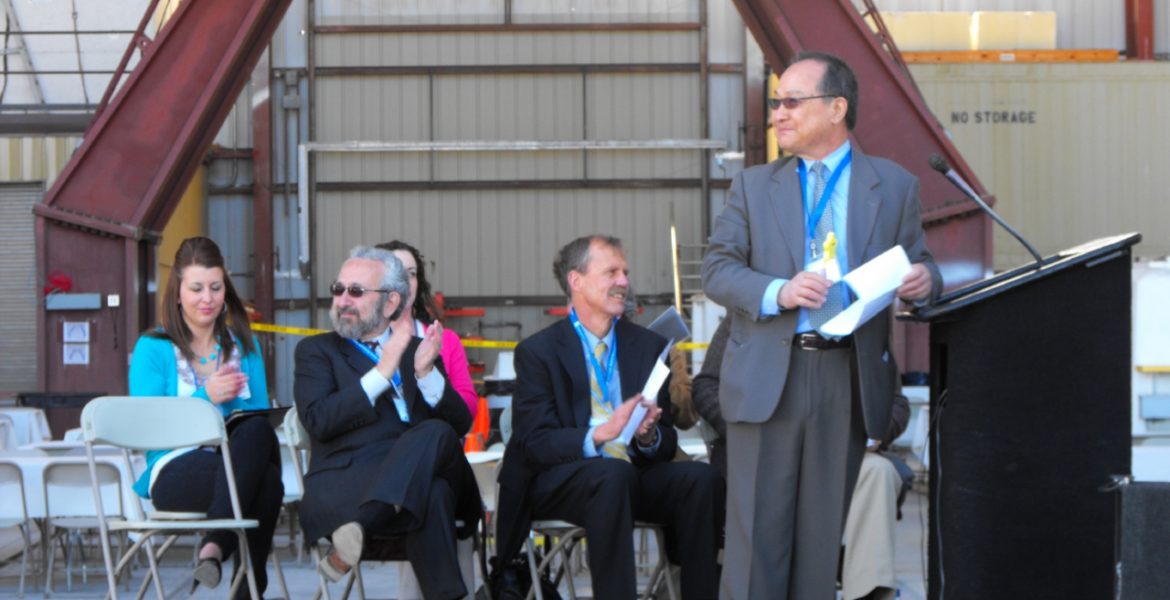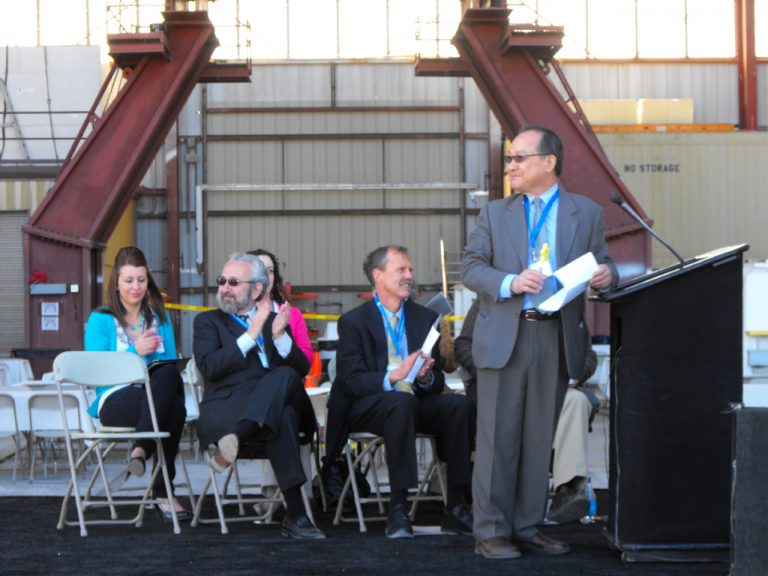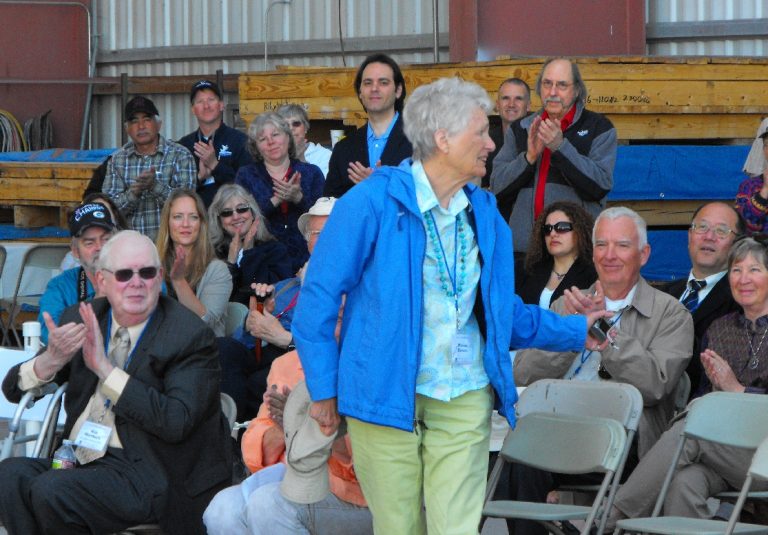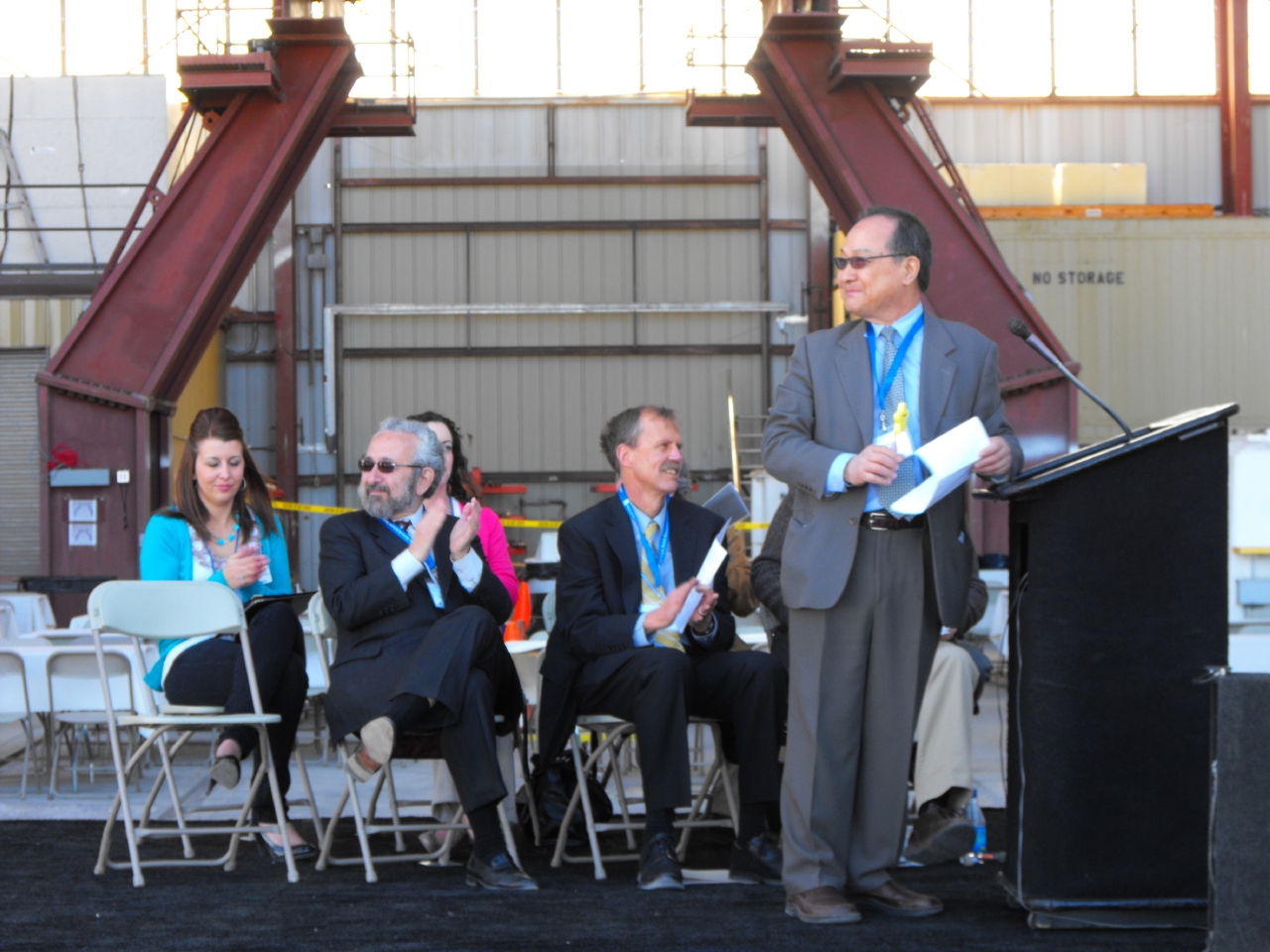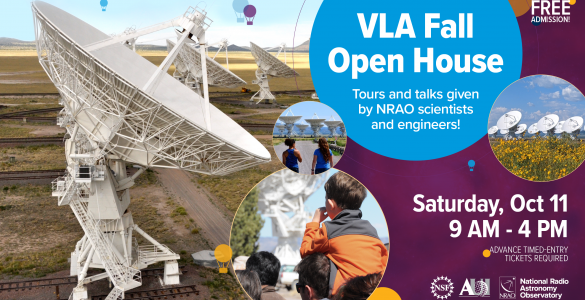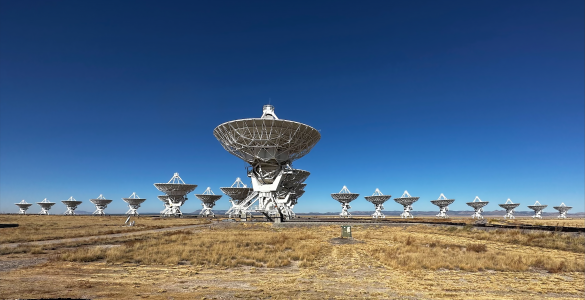Astronomers and officials from around the globe gathered on the high desert of New Mexico Saturday to officially bestow a new name on the world’s most famous radio telescope and to mark its transformation into a new and vastly more powerful tool for science. The iconic Very Large Array (VLA) now is the Karl G. Jansky Very Large Array, honoring the founder of radio astronomy.
“Just as Karl Jansky’s groundbreaking discovery of cosmic radio waves in 1932 opened a new era of scientific discovery, the vastly improved capabilities of this telescope will give scientists new ways of tackling the challenges facing 21st-Century astrophysics,” said Fred K.Y. Lo, Director of the National Radio Astronomy Observatory (NRAO).
To celebrate the decade-long effort to bring the VLA, first dedicated in 1980, up to today’s technological state of the art, Lo was joined by Ethan Schreier, President of Associated Universities, Inc.; James Ulvestad, Director of the Astronomical Sciences Division of the National Science Foundation; representatives of U.S. Senator Tom Udall and U.S. Rep. Steve Pearce; and astronomers and officials from the U.S., Canada, Mexico, Europe, China, Australia, and Japan. The event formally inaugurated the new name, and recognized those who worked on the project.
“The Jansky VLA of today is, in some ways, thousands of times more powerful than the VLA of yesterday. It already has produced scientific discoveries that were not possible before. Over the coming years, we will see an impressive flow of new discoveries made possible by the efforts of many very talented and dedicated people,” said Dale Frail, NRAO’s Assistant Director for New Mexico Operations.
“We are celebrating the emergence of a new telescope built on the foundation of its predecessor. It is a triumph of the engineering prowess of the NRAO and its partners. With this project, our team in New Mexico has elevated the state of the art for radio astronomy, just as they are doing with their contributions to the ALMA telescope in Chile, the millimeter-wavelength companion to the revitalized VLA,” Schreier said.
Upon a command from Lo, the 27, 230-ton dish antennas of the Jansky VLA turned to begin observing a set of dwarf galaxies for the official first observation by the renamed facility.
Following the ceremony to inaugurate the new name, the officials and guests enjoyed a lunch in the giant Antenna Assembly Building, where the 230-ton dish antennas of the Jansky VLA are maintained, and where their conversion to accommodate the new technology was completed. Guests also received in-depth tours of the facility, browsed displays of the VLA’s cutting-edge technology, and saw posters describing some of its early scientific results.
The public is invited to an Open House at the Jansky VLA on Saturday, April 7, with guided tours running from 11:00 a.m. until 4 p.m. This event will feature presentations on the upgrade project, the capabilities of the new facility, and its scientific promise. No reservations are required for this Open House.
In addition, the NRAO unveiled an online virtual tour of the Jansky VLA. This online tour provides a detailed, behind-the-scenes look at the telescope, how it works, and the people who make it work. The tour is at:
VLA Explorer
The National Radio Astronomy Observatory is a facility of the National Science Foundation, operated under cooperative agreement by Associated Universities, Inc.
BACKGROUND INFORMATION
Karl Guthe Jansky (1905-1950)
Karl Guthe Jansky joined Bell Telephone Laboratories in New Jersey in 1928, immediately after receiving his undergraduate degree in physics. He was assigned the task of studying radio waves that interfered with the recently-opened transatlantic radiotelephone service.
After designing and building advanced, specialized equipment, he made observations over the entire year of 1932 that allowed him to identify thunderstorms as major sources of radio interference, along with a much weaker, unidentified radio source. Careful study of this “strange hiss-type static” led to the conclusion that the radio waves originated from beyond our Solar System, and indeed came from the center of our Milky Way Galaxy.
His discovery was reported on the front page of the New York Times on May 5, 1933, and published in professional journals. Janksy thus opened an entirely new “window” on the Universe. Astronomers previously had been confined to observing those wavelengths of light that our eyes can see.
Through the new “window” that Jansky opened, astronomers study radio emission from objects throughout the Universe.
Discoveries made with radio telescopes have earned four Nobel Prizes. Those include the discovery of pulsars, the ubiquitous microwave background radiation that is the remnant heat from the Big Bang, and the first indirect evidence for the gravitational waves predicted by Albert Einstein.
Jansky, who died at the relatively young age of 44, before radio astronomy produced its major contributions, never was so honored for his discovery, but a Nobel Prize was awarded in 2002 for comparable discoveries of cosmic radiation in other regions of the spectrum. Jansky has been memorialized by the scientific unit “Jansky” that astronomers use every day as a measure of the strength of astronomical radio sources.
The Karl G. Jansky Very Large Array
The original VLA was authorized by Congress in 1972, and astronomers began using it for research even before its dedication in 1980. To date, more than 2,500 scientists from around the world have used the VLA for more than 13,000 observing projects studying phenomena ranging from our own Solar System to the edge of the observable Universe, billions of light-years away. More than 200 Ph.D dissertations have been based on data obtained from VLA observations.
Upgrading the electronics of the VLA to the technological state of the art began in 2001, and completion is scheduled for later this year. The upgrade project was funded by the National Science Foundation, and by contributions from Canada and Mexico. The upgrade replaced the 1970s-vintage electronic equipment, analog data-transmission system, and the central, special-purpose computing “heart” of the system with state-of-the-art receivers and electronics, an all-digital, high-bandwidth fiber-optic data-transmission system, and a new, central supercomputer with an innovative design, built by NRAO’s Canadian colleagues. When the upgrade project started, the VLA was called the Expanded VLA, or EVLA. As this project nears completion, the observatory is officially naming it the Karl G. Jansky Very Large Array.
The Jansky VLA is more than ten times more sensitive to faint radio emission than the original VLA, and covers more than three times more radio frequency range. It will provide astronomers the capability to address key outstanding scientific questions, ranging from the formation of stars and planets in the Milky Way and nearby galaxies, to mapping magnetic fields in galaxies and clusters, and imaging the gas that forms the earliest galaxies.






